1. The document discusses the history and theories of human evolution from early hominids to modern humans. It traces the major species in our lineage and their defining characteristics.
2. Early hominid species like Australopithecus afarensis and Homo habilis exhibited traits like bipedalism and increased brain size compared to apes. Later species such as Homo erectus and Homo heidelbergensis used more advanced tools and mastered fire.
3. Neanderthals and early Homo sapiens inhabited Europe and Asia around 200,000 years ago before modern humans emerged in Africa around 50,000 years ago. Theories of human evolution are constantly reevaluated
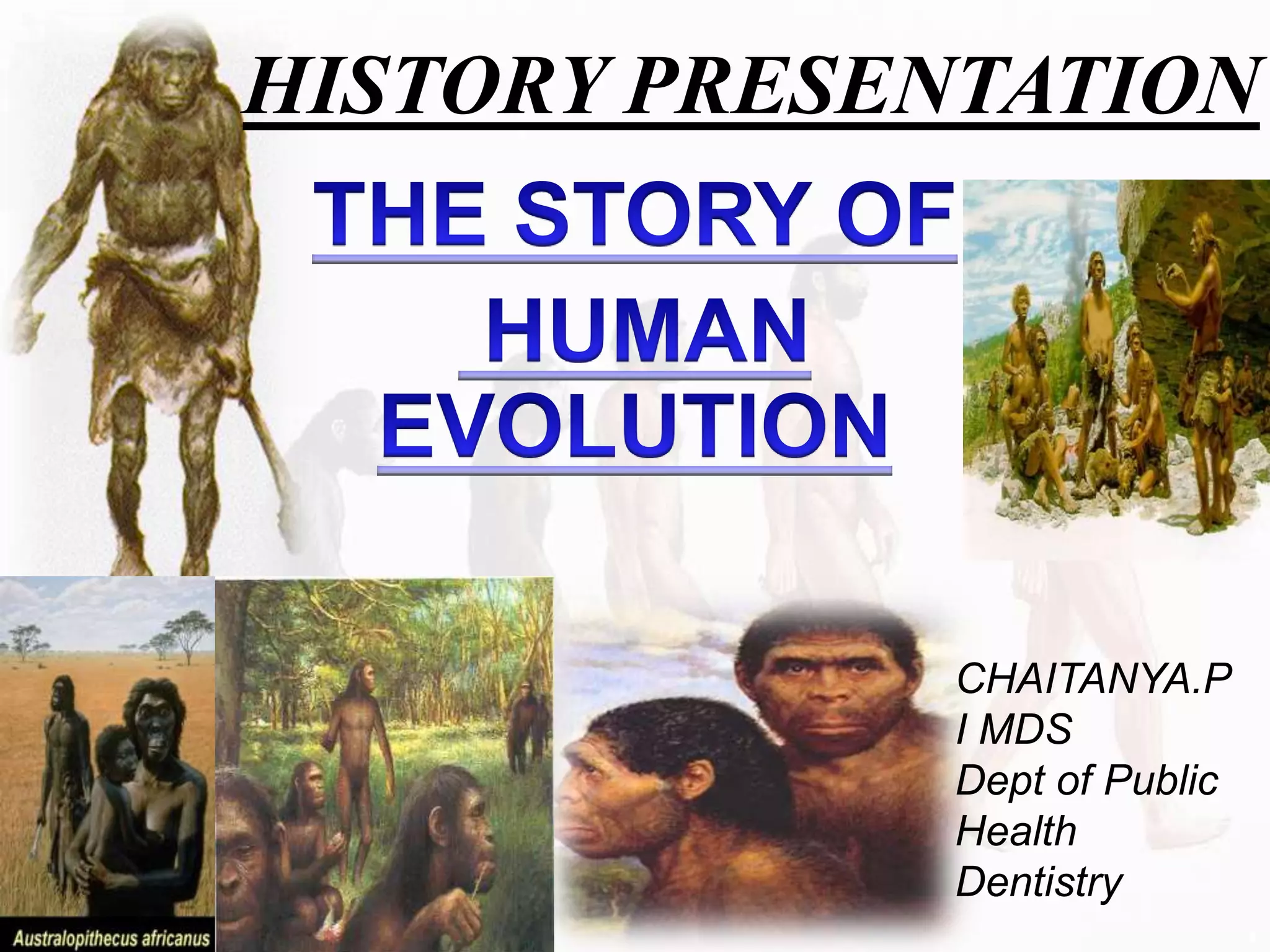


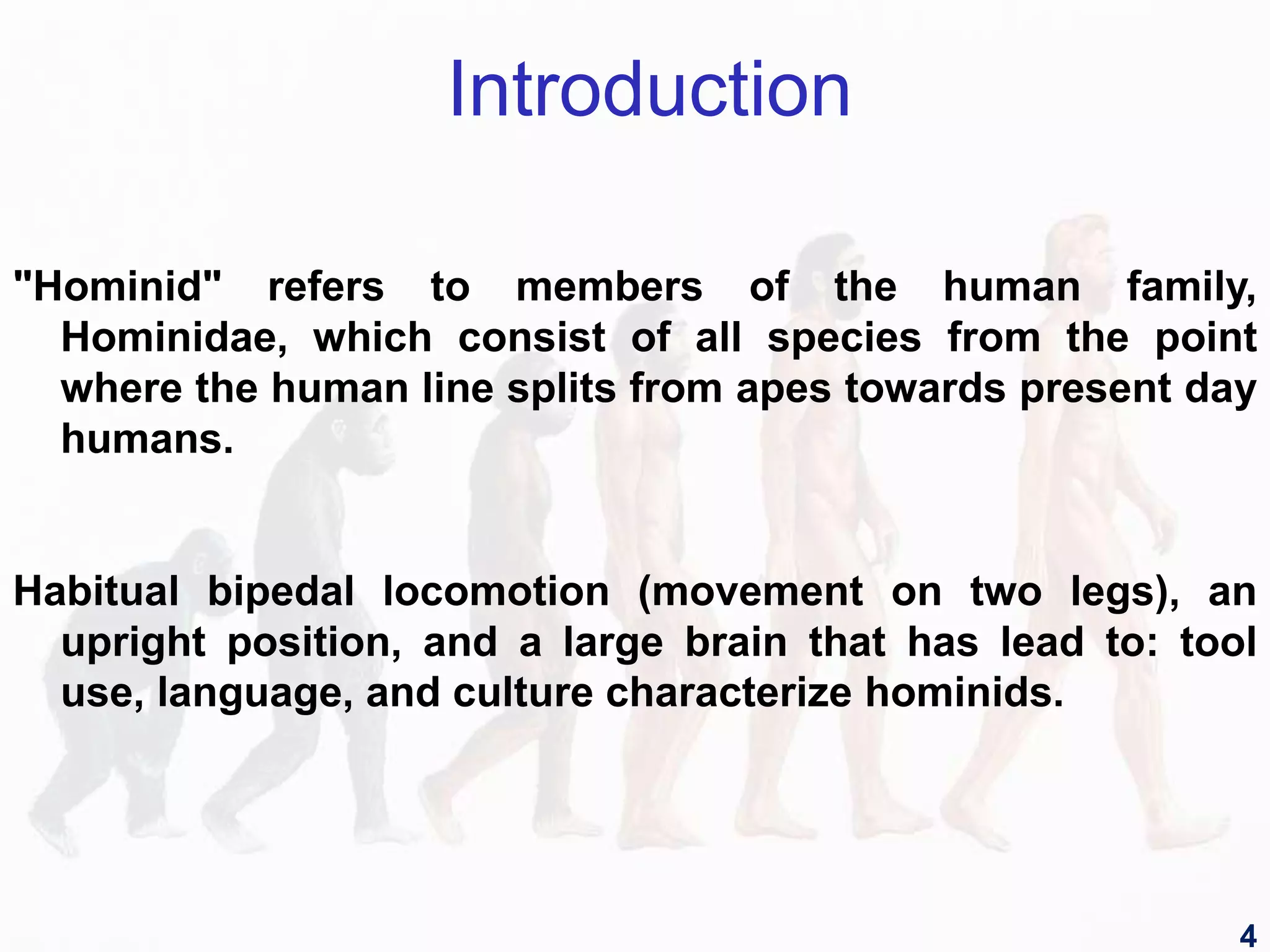

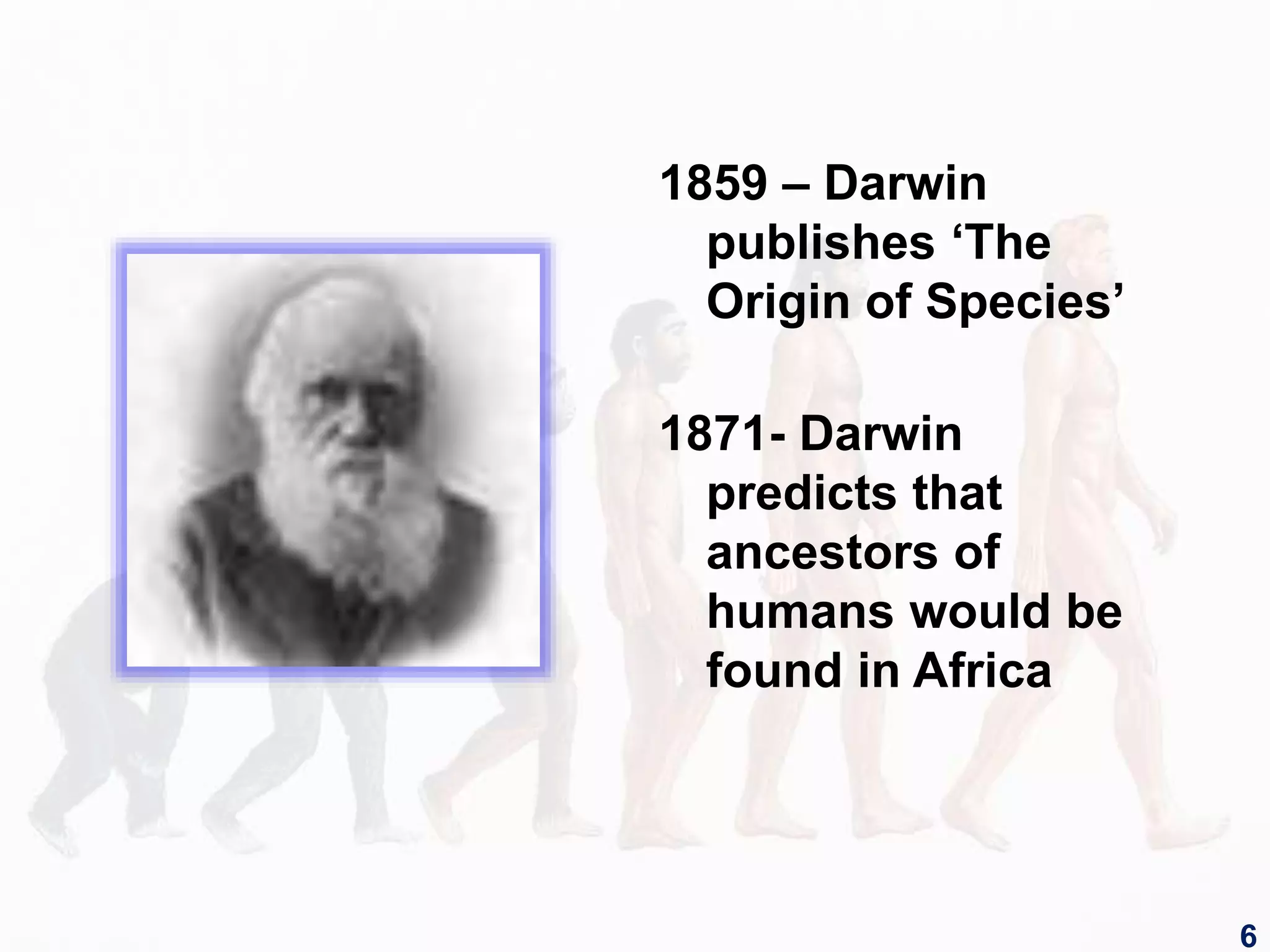
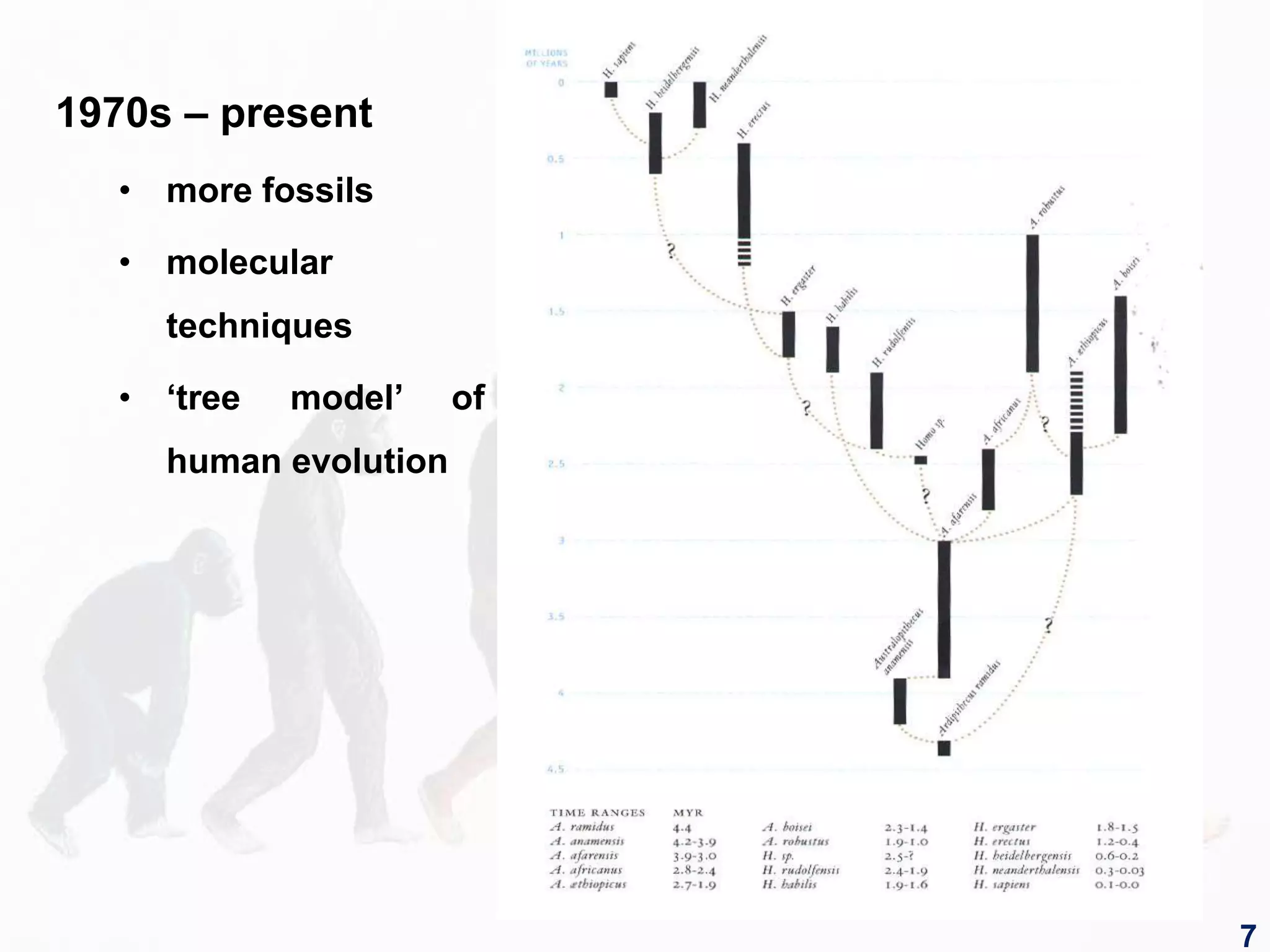


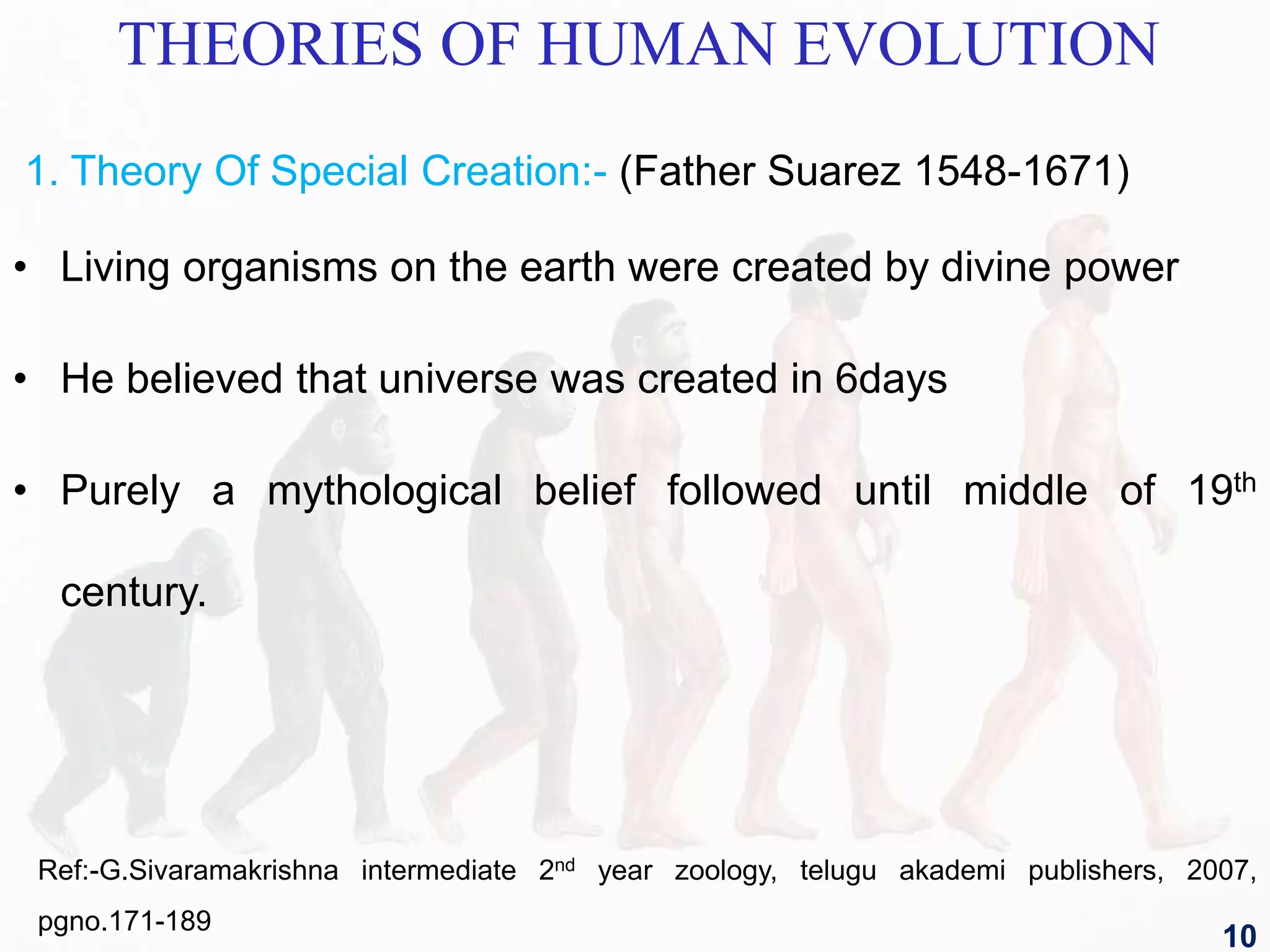






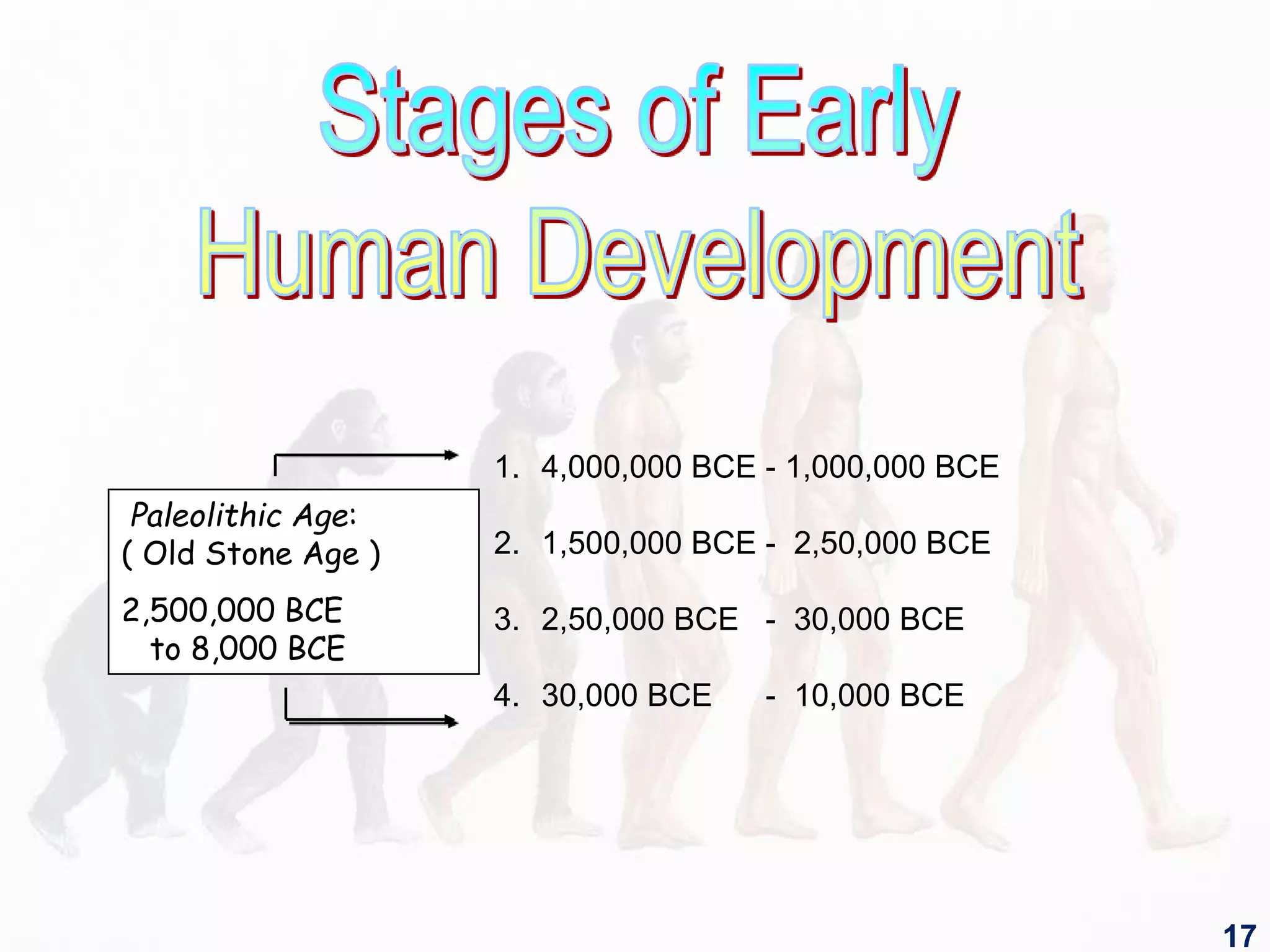


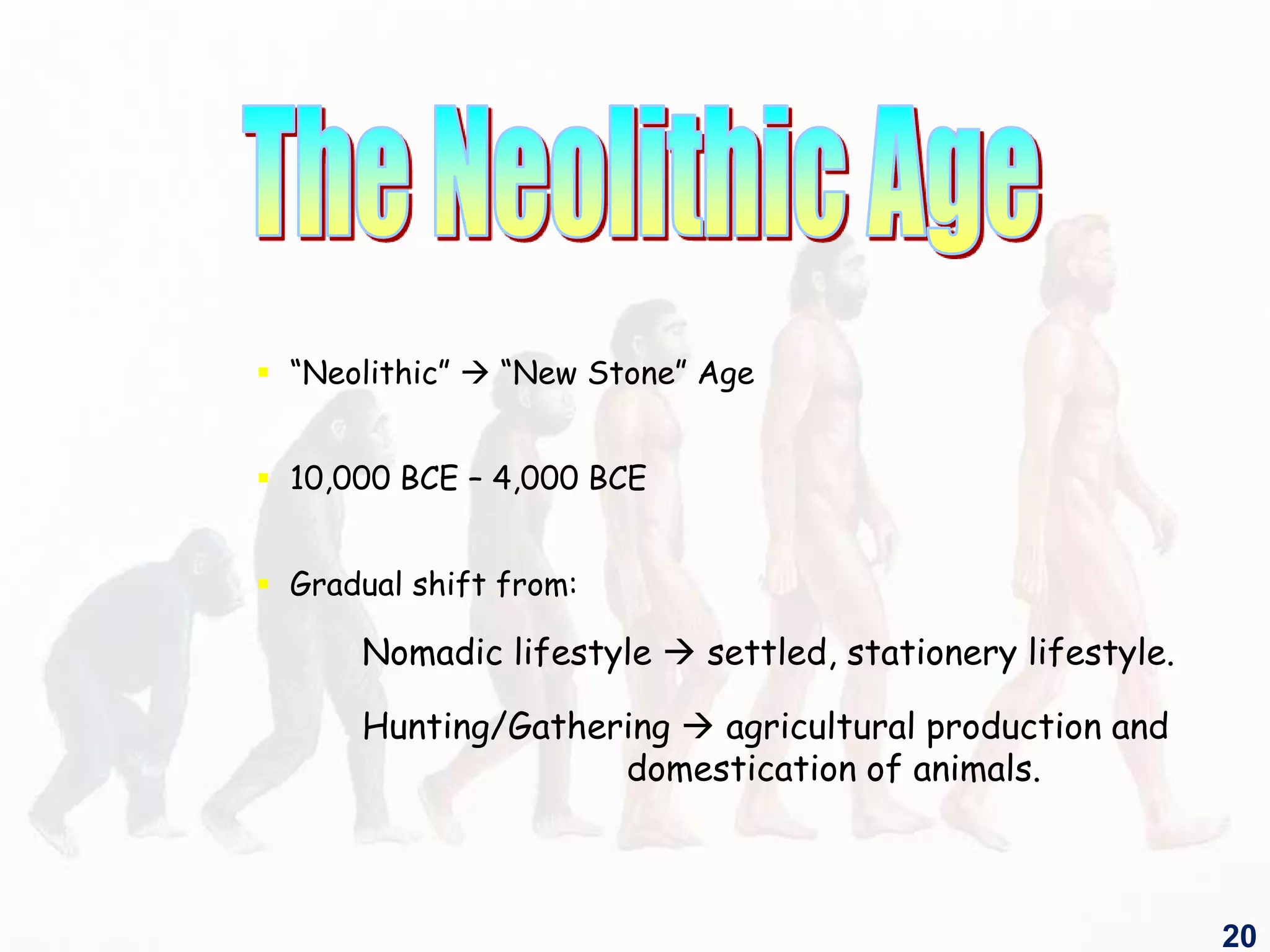






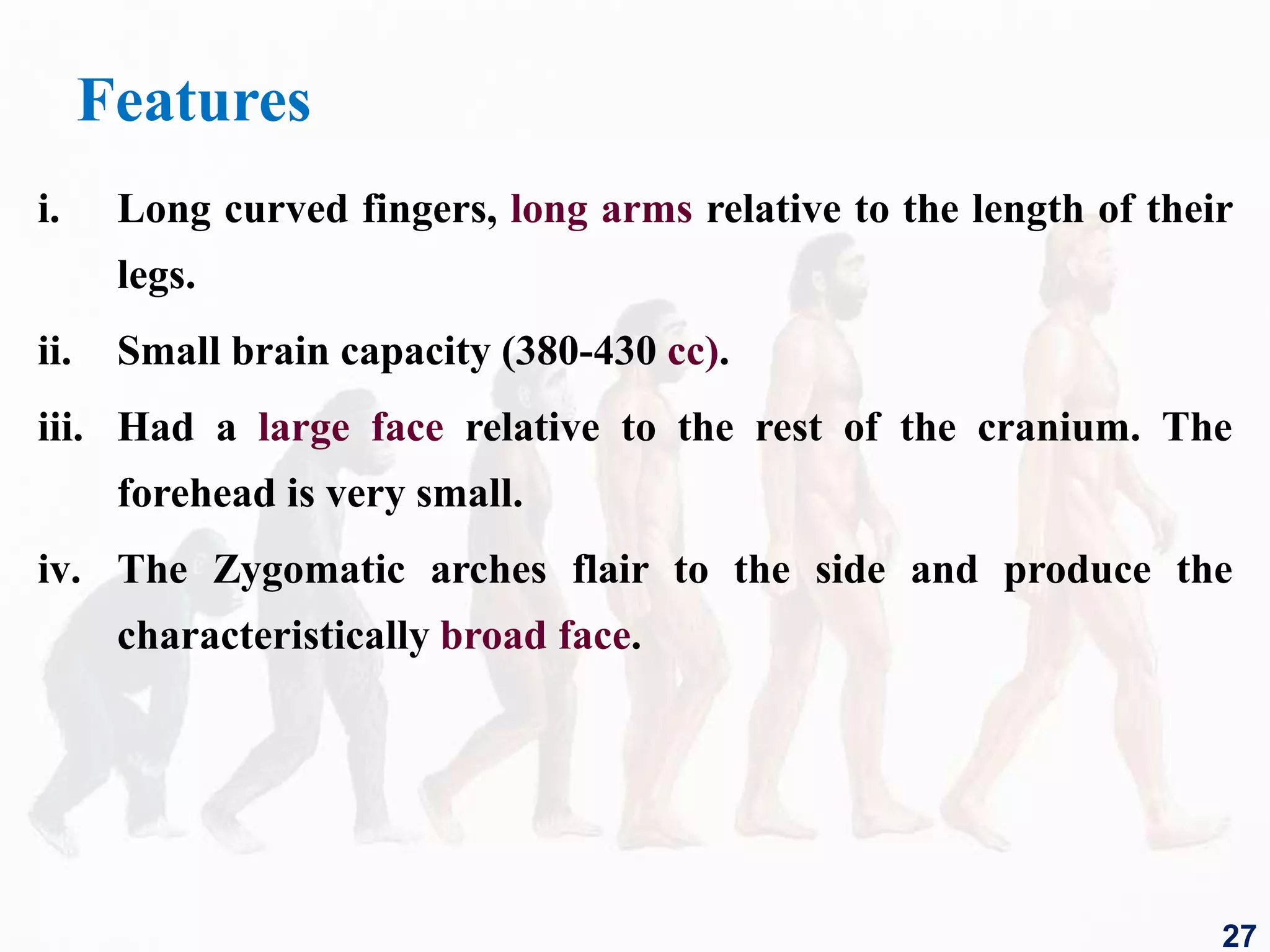














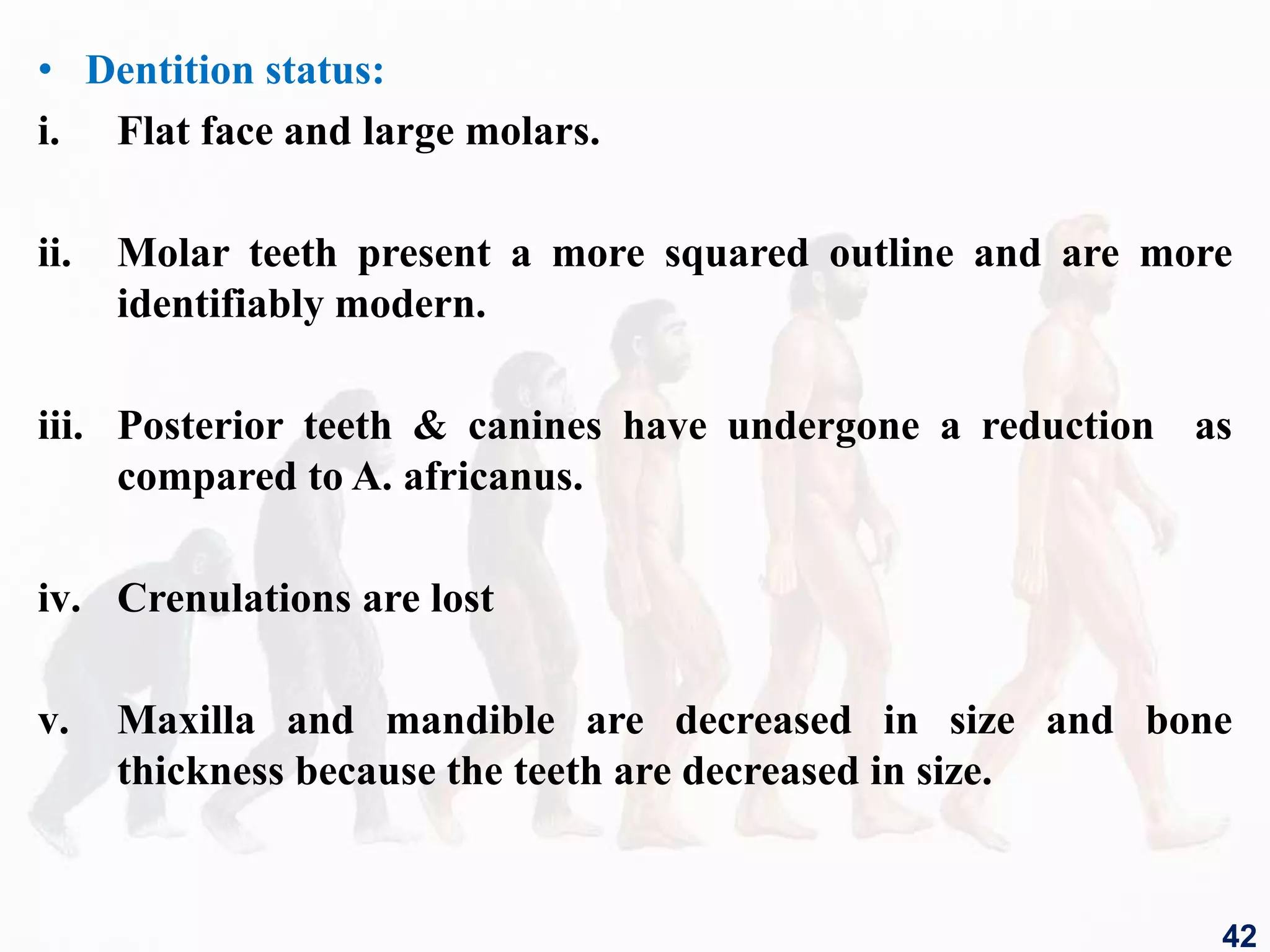




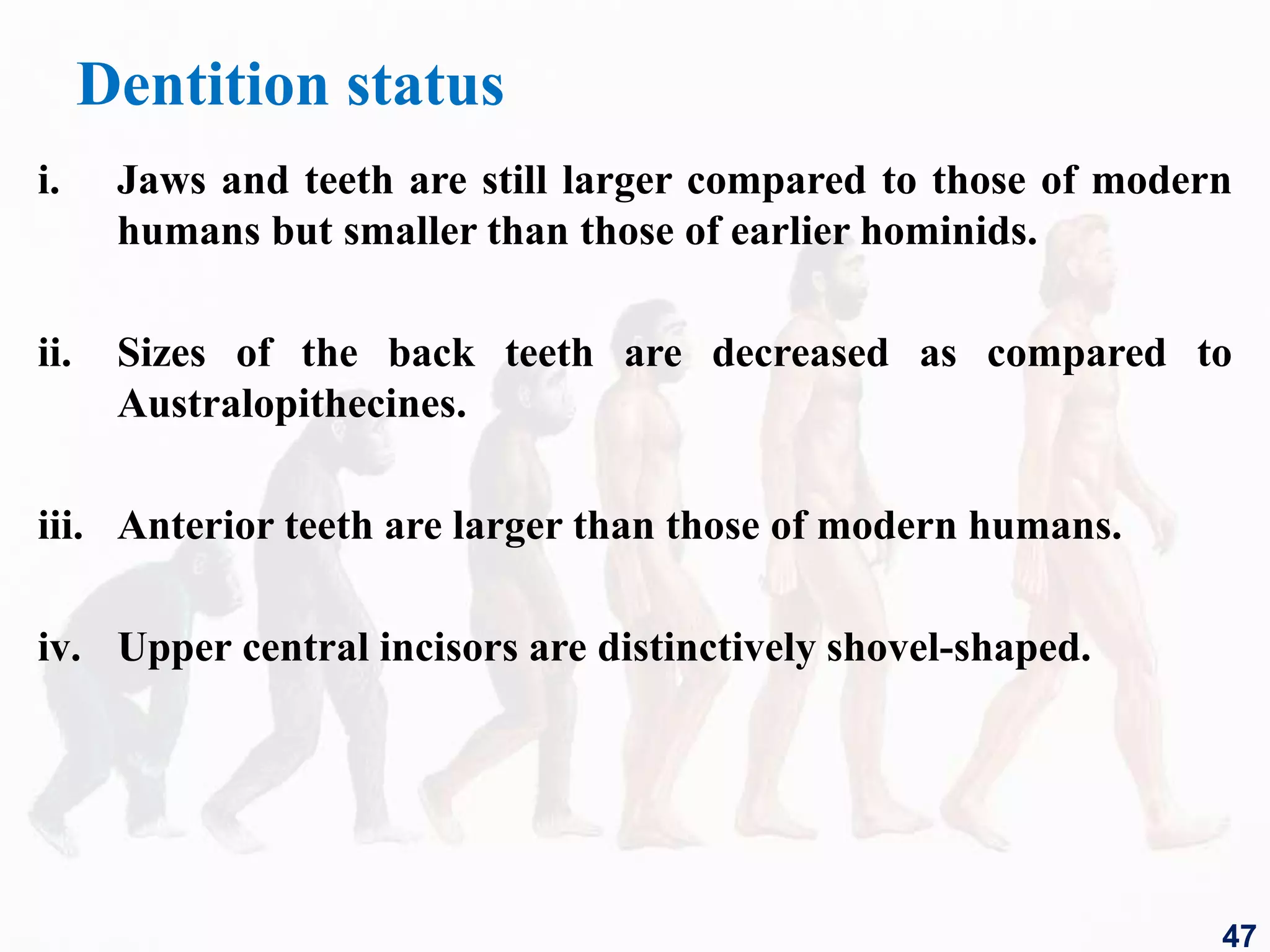


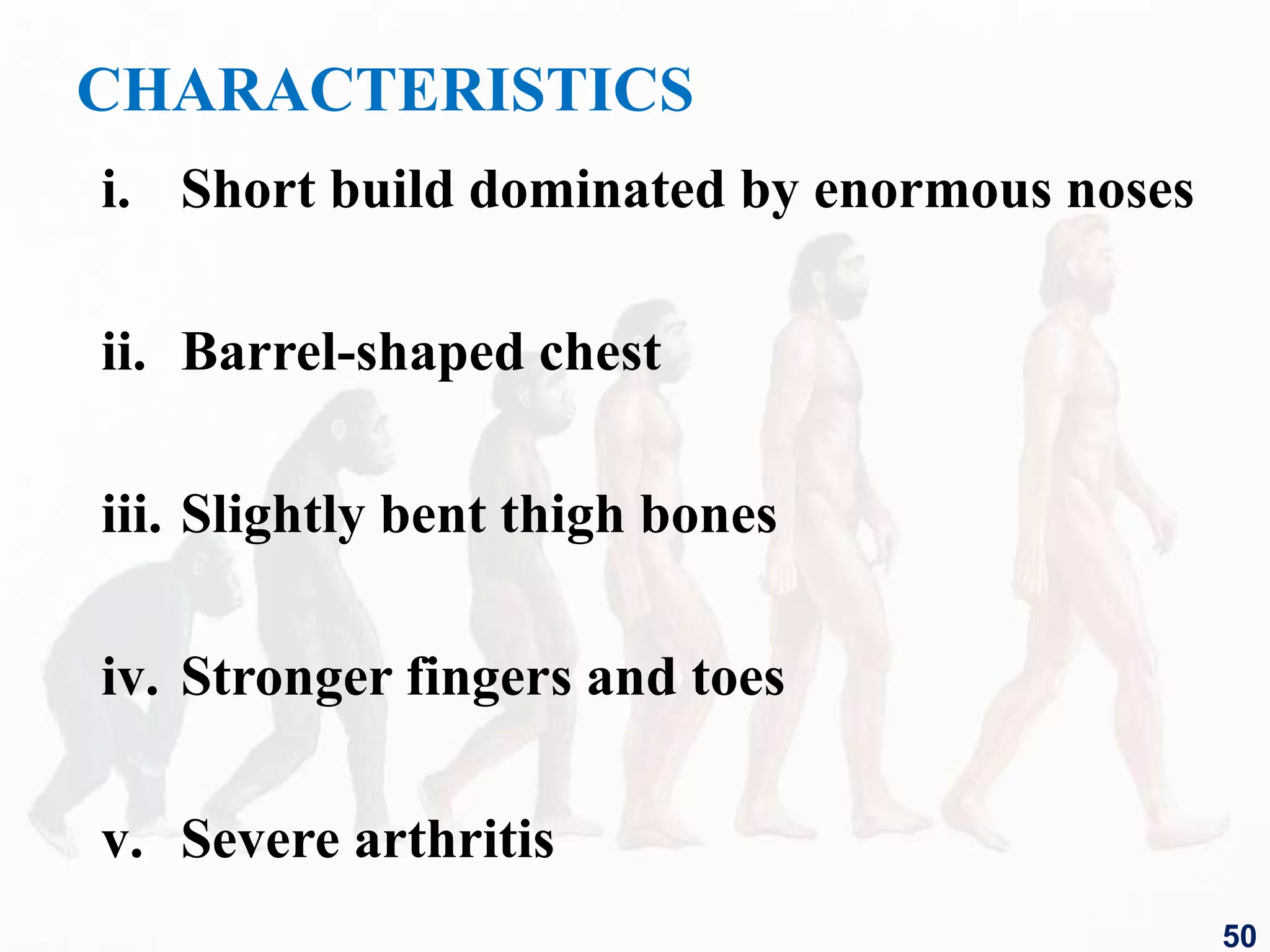

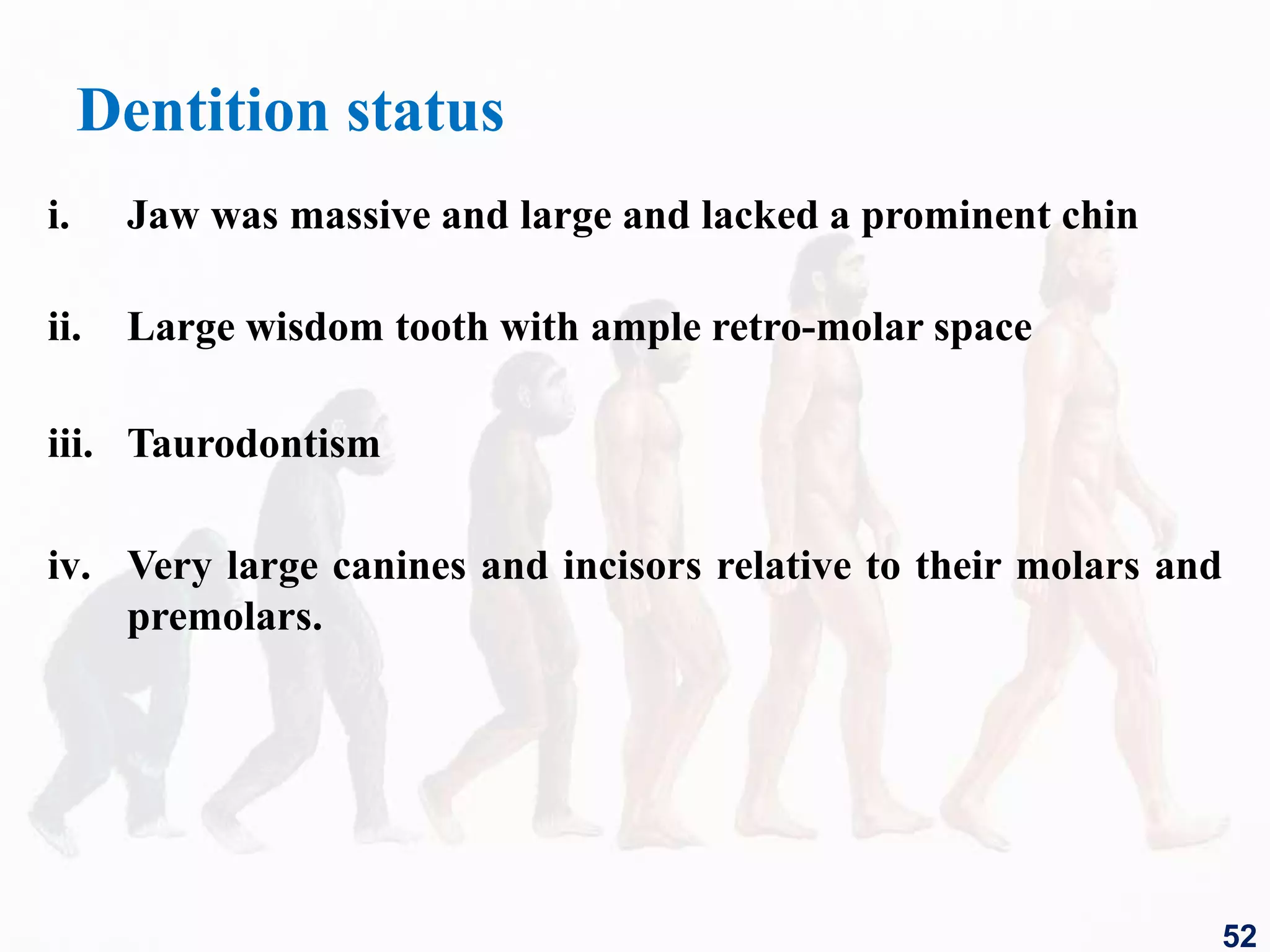

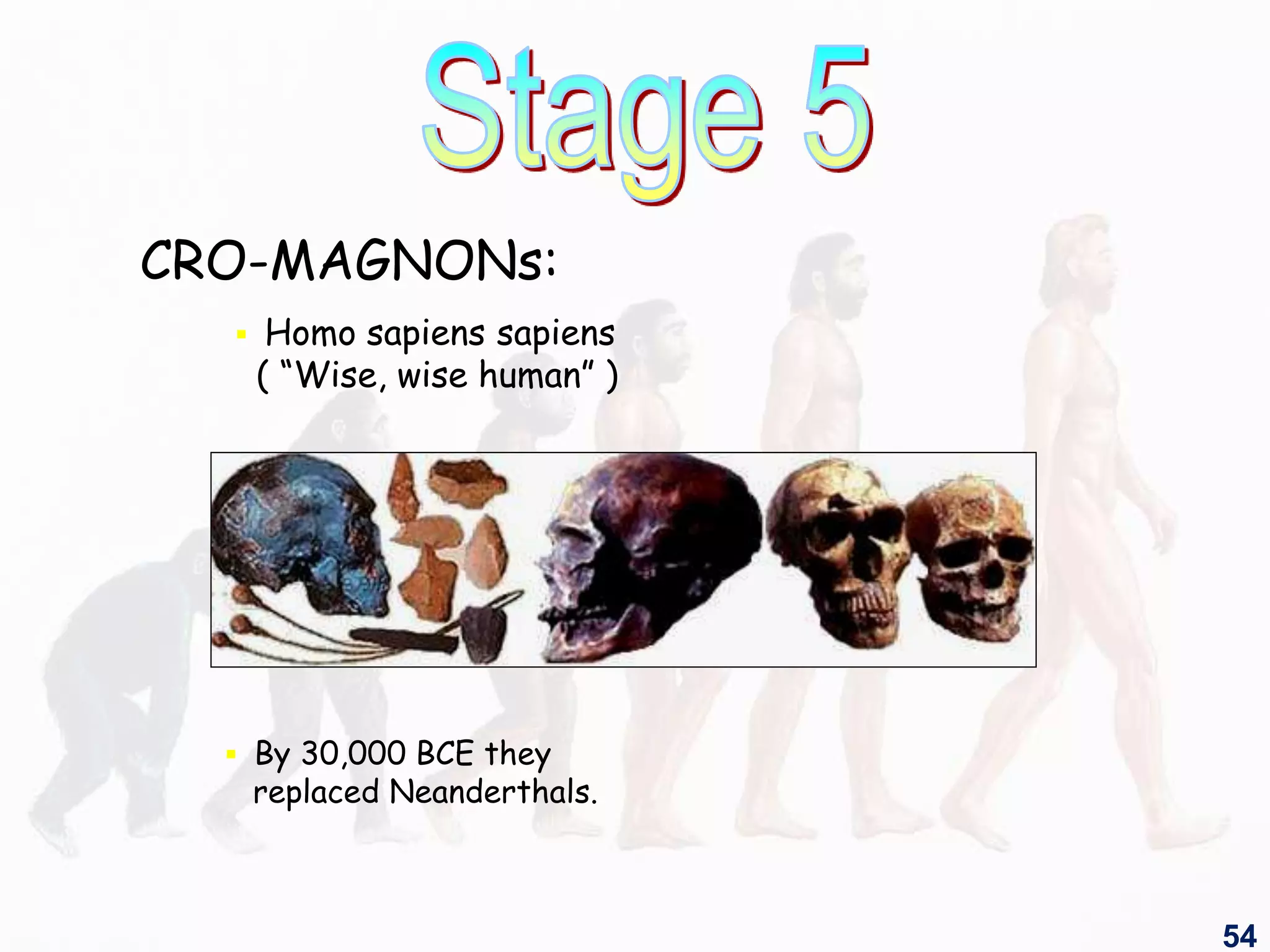






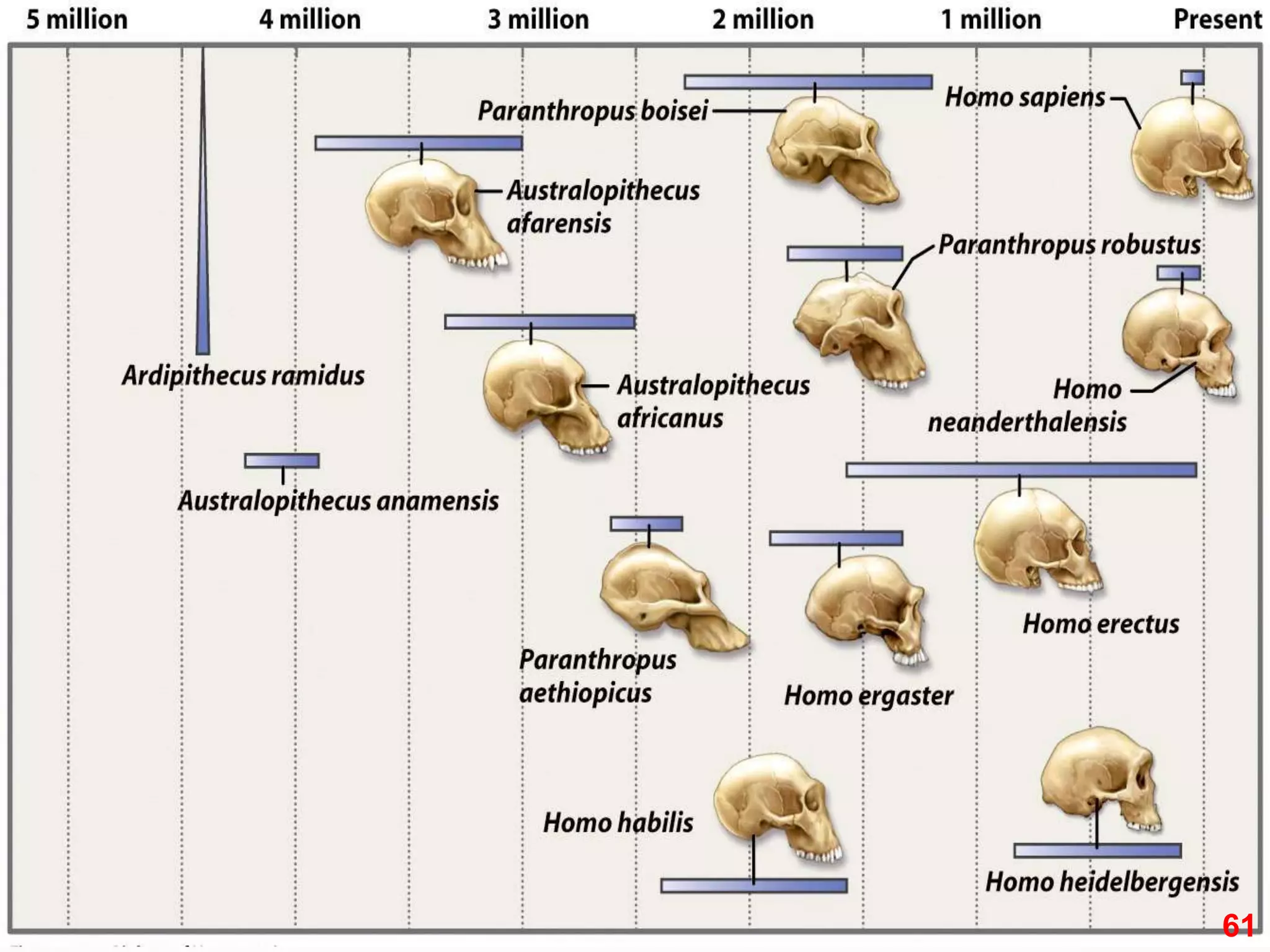


![What differentiates Ape from Man?
Critical Characteristics:
Large brain
Foramen magnum
Dentition – Teeth
Bipedal skeletal structure & musculature
S-shaped spinal column [not C]
pelvic structure [shortening-bowl shaped]
muscular (gluteal & hamstring)
lengthening of lower limb [femur]
changes in feet to become weight-bearing
structures
64](https://image.slidesharecdn.com/4-161111062526/75/4-human-evolution-64-2048.jpg)



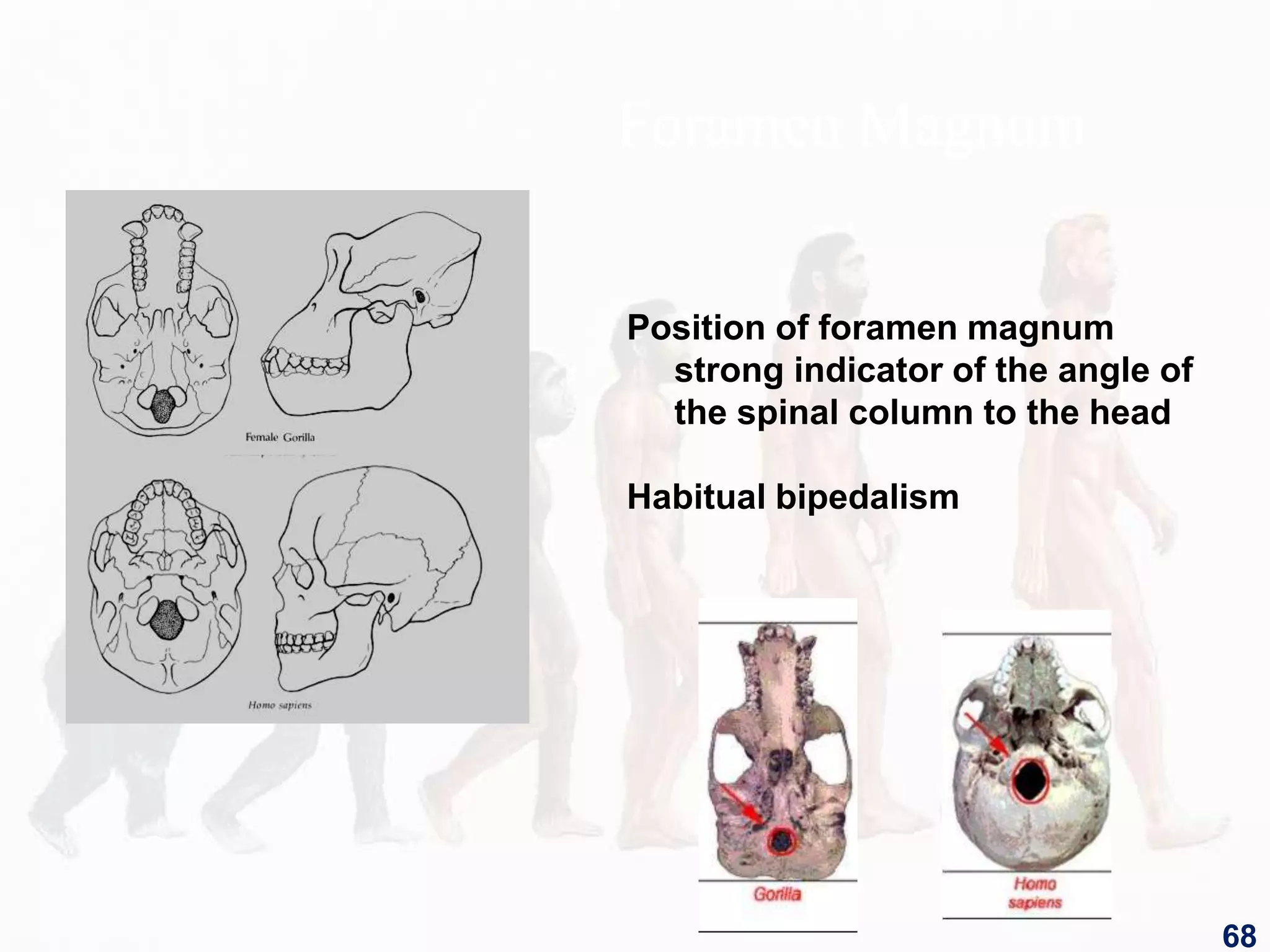

![Skeletal Structure
Upper legs angled inward from hip joints position knees to better support
body during upright walking [apes away from side to side]
A = femur b = tibia c = weight-bearing axis
70](https://image.slidesharecdn.com/4-161111062526/75/4-human-evolution-70-2048.jpg)


![Comparison of some soft tissue involved in biomechanical differences between
chimps and humans [American Museum of Natural History webpage]
• Humans 2 of 3 semicircular
canals [balance] specialized
to stabilize head
• Less muscle between head and
shoulders in humans
• Chimps have to fight gravity to hold
heads up while walking.
• Our head just sits on our necks
• Humans more gluteus maximus
muscle
• Stabilizes femur into pelvis and
helps keeps trunk and leg moving
together.
• Achilles tendon and tendon of arch
of the foot larger in humans
• In running act like springs,
absorbing and releasing energy 73](https://image.slidesharecdn.com/4-161111062526/75/4-human-evolution-73-2048.jpg)




